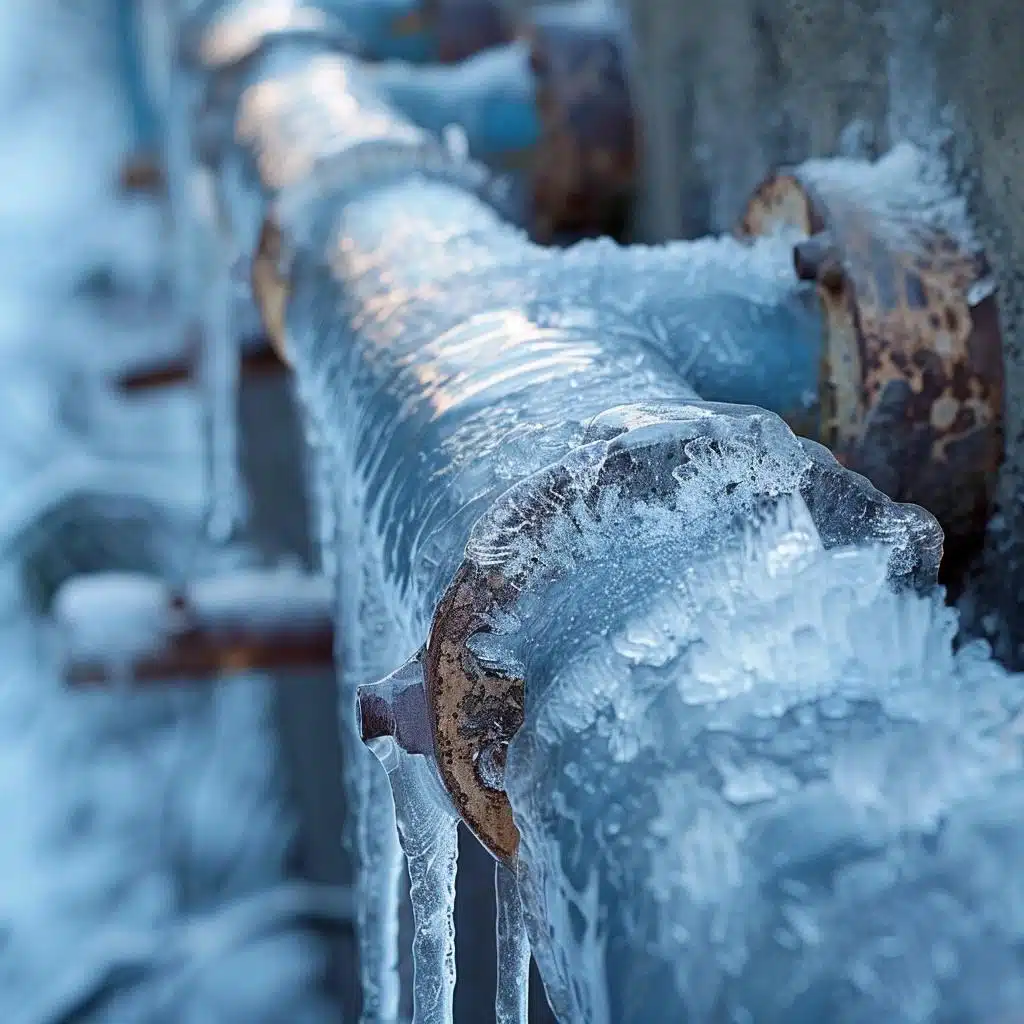We've found this article relating to Prevent Frozen Pipes down the page on the internet and believe it made perfect sense to share it with you over here.

Cold weather can wreak havoc on your plumbing, especially by freezing pipelines. Below's just how to prevent it from happening and what to do if it does.
Intro
As temperatures decline, the risk of icy pipes increases, possibly bring about expensive repair work and water damages. Comprehending exactly how to prevent icy pipelines is crucial for property owners in cool climates.
Prevention Tips
Shielding prone pipes
Cover pipes in insulation sleeves or use warmth tape to safeguard them from freezing temperature levels. Focus on pipes in unheated or external areas of the home.
Home heating techniques
Maintain indoor spaces adequately heated, particularly areas with pipes. Open up cabinet doors to permit warm air to circulate around pipelines under sinks.
Exactly how to recognize icy pipelines
Look for reduced water circulation from faucets, uncommon odors or sounds from pipelines, and noticeable frost on subjected pipelines.
Long-Term Solutions
Architectural adjustments
Think about rerouting pipelines far from exterior walls or unheated areas. Include additional insulation to attic rooms, cellars, and crawl spaces.
Updating insulation
Purchase high-grade insulation for pipes, attics, and walls. Proper insulation helps maintain constant temperatures and minimizes the threat of frozen pipes.
Safeguarding Outdoor Plumbing
Yard pipes and outside faucets
Separate and drain pipes yard pipes before wintertime. Mount frost-proof spigots or cover outside faucets with insulated caps.
Comprehending Icy Pipes
What creates pipes to ice up?
Pipes ice up when exposed to temperature levels listed below 32 ° F (0 ° C) for prolonged periods. As water inside the pipes ices up, it broadens, taxing the pipe wall surfaces and possibly triggering them to break.
Risks and damages
Icy pipelines can result in water supply interruptions, residential property damage, and pricey repair work. Ruptured pipes can flooding homes and create substantial structural damage.
Indicators of Frozen Piping
Determining icy pipelines early can prevent them from rupturing.
What to Do If Your Pipelines Freeze
Immediate activities to take
If you suspect frozen pipelines, maintain faucets open up to ease stress as the ice thaws. Use a hairdryer or towels soaked in hot water to thaw pipes gradually.
Conclusion
Preventing frozen pipelines needs aggressive steps and quick actions. By understanding the causes, indications, and safety nets, home owners can protect their pipes throughout cold weather.
5 Ways to Prevent Frozen Pipes
Drain Outdoor Faucets and Disconnect Hoses
First, close the shut-off valve that controls the flow of water in the pipe to your outdoor faucet. Then, head outside to disconnect and drain your hose and open the outdoor faucet to allow the water to completely drain out of the line. Turn off the faucet when done. Finally, head back to the shut-off valve and drain the remaining water inside the pipe into a bucket or container. Additionally, if you have a home irrigation system, you should consider hiring an expert to clear the system of water each year.
Insulate Pipes
One of the best and most cost-effective methods for preventing frozen water pipes is to wrap your pipes with insulation. This is especially important for areas in your home that aren’t exposed to heat, such as an attic. We suggest using foam sleeves, which can typically be found at your local hardware store.
Keep Heat Running at 65
Your pipes are located inside your walls, and the temperature there is much colder than the rest of the house. To prevent your pipes from freezing, The Insurance Information Institute suggests that you keep your home heated to at least 65 degrees, even when traveling. You may want to invest in smart devices that can keep an eye on the temperature in your home while you’re away.
Leave Water Dripping
Moving water — even a small trickle — can prevent ice from forming inside your pipes. When freezing temps are imminent, start a drip of water from all faucets that serve exposed pipes. Leaving a few faucets running will also help relieve pressure inside the pipes and help prevent a rupture if the water inside freezes.
Open Cupboard Doors
Warm your kitchen and bathroom pipes by opening cupboards and vanities. You should also leave your interior doors ajar to help warm air circulate evenly throughout your home.

Do you like more info about How to Prevent Your Pipes From Freezing? Try leaving a short review further down. We'd be delighted to know your reactions about this posting. In hopes to see you back again in the near future. Enjoyed reading our piece of writing? Please share it. Let somebody else discover it. I praise you for being here. Return soon.
Source This Article